Foot Massage: Holistic Wellness Benefits & Simple Techniques
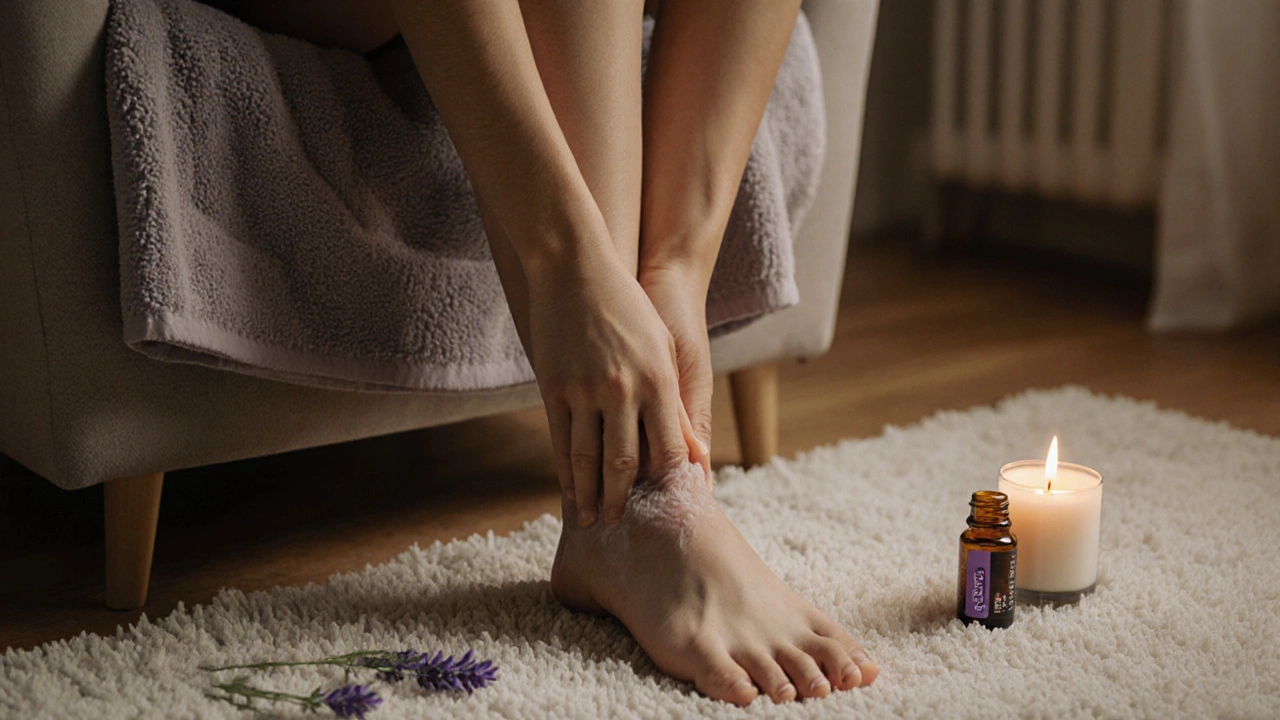
When you think about relaxation, Foot massage is a therapeutic practice that targets the feet to promote overall health. By stimulating pressure points on the soles, it can influence distant organs and help the body rebalance itself. This article walks you through why the practice matters, how to do it safely, and what to expect from a professional session.
Key Takeaways
- Foot massage improves circulation, reduces stress, and can enhance sleep quality.
- It connects to Reflexology, a map of foot zones linked to body systems.
- Simple at‑home techniques can be effective, but chronic conditions may require a certified therapist.
- Choosing the right environment and pressure level prevents injury.
- A quick checklist helps you evaluate whether a session is right for you.
What Is Foot Massage?
At its core, Foot massage involves applying rhythmic pressure to the arches, heels, and toes. The practice dates back to ancient Egypt and traditional Chinese medicine, where it was believed that the feet act like a miniature map of the entire body. Modern research shows that stimulating specific zones can trigger neural pathways that affect hormone release, immune response, and even pain perception.
How Foot Massage Supports Whole‑Body Wellness
Three main systems benefit most:
- Circulation: Gentle kneading encourages blood flow to the extremities, helping oxygen and nutrients reach cells faster.
- Stress relief: The tactile stimulus activates the parasympathetic nervous system, lowering cortisol and promoting a calm mind.
- Lymphatic drainage: Light stroking moves lymph fluid, aiding in the removal of metabolic waste and reducing swelling.
These effects are not isolated; improved circulation boosts detox pathways, while reduced stress enhances sleep, creating a virtuous cycle of health.
Fundamental Techniques You Can Try at Home
Before you book a therapist, give these simple moves a go. All you need is a comfortable chair, a small towel, and optionally a few drops of lavender oil.
- Warm‑up rub: Hold one foot with both hands, gently rotate the ankle, and rub the top of the foot for 30 seconds.
- Arch press: Using your thumb, press into the arch in a circular motion, moving from the heel toward the ball of the foot. Do 10‑15 circles per foot.
- Toe stretch: Grasp each toe between thumb and forefinger, pull slightly backward, hold for two seconds, then release.
- Heel knead: With the heel of your hand, apply firm pressure to the heel’s central point, sliding outward toward the edge. Repeat for 1 minute.
- Finish with a glide: Lightly glide your palms from the toes to the calf, mimicking a wave. End with a few deep breaths.
Practicing these steps 3‑4 times a week can already lower perceived fatigue and improve balance.
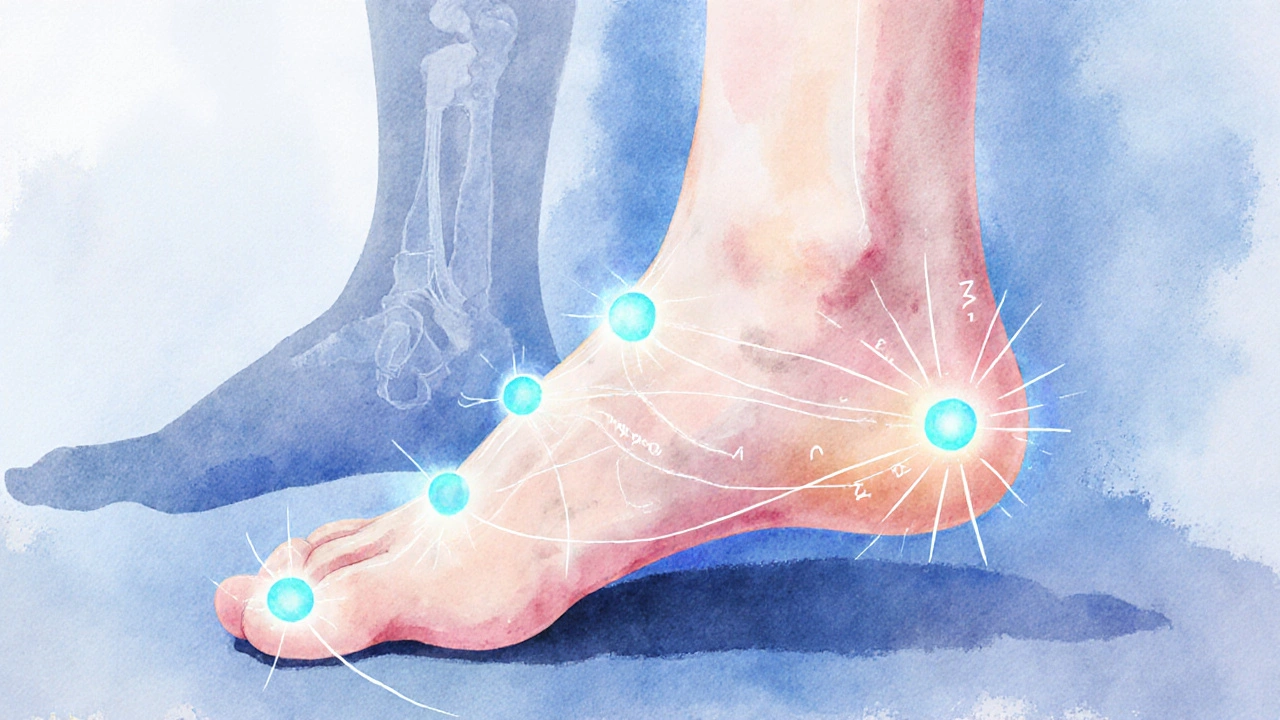
When to Seek a Professional Practitioner
If you notice any of the following, it’s time to book a certified massage therapist:
- Persistent foot pain that doesn’t improve after a week of at‑home care.
- Neuropathy, diabetic foot ulcers, or severe varicose veins - these conditions need a specialist’s assessment.
- Desire for a deeper, full‑body integration such as Reflexology sessions that target organ-specific zones.
A professional will assess your foot anatomy, choose appropriate pressure levels, and may combine techniques like Acupressure or Aromatherapy to enhance the experience.
Comparing Foot Massage to Other Modalities
| Aspect | Foot Massage | Swedish Massage | Sports Massage |
|---|---|---|---|
| Primary Goal | Improve circulation & reflex zones | General relaxation and muscle tension release | Performance recovery & injury prevention |
| Typical Session Length | 15‑30 minutes | 60‑90 minutes | 30‑60 minutes |
| Common Tools | Hands, thumb, optional oils | Hands, forearms, sometimes hot stones | Hands, elbows, percussion devices |
| Best For | Stress relief, foot fatigue, reflexology beginners | Full‑body relaxation, stress management | Athletes, active individuals, chronic muscle soreness |
Common Myths Debunked
Myth 1: "Foot massage is just a luxury." In reality, clinical trials have linked regular foot massage to measurable drops in systolic blood pressure and improved glycemic control in diabetic patients.
Myth 2: "If it hurts, it’s working." Discomfort can indicate excessive pressure or an underlying condition. A skilled therapist adjusts force to stay within a pleasant, therapeutic range.
Myth 3: "You can’t get benefits without a therapist." While professional skill adds depth, consistent self‑massage provides many of the same circulatory and stress‑reduction benefits.
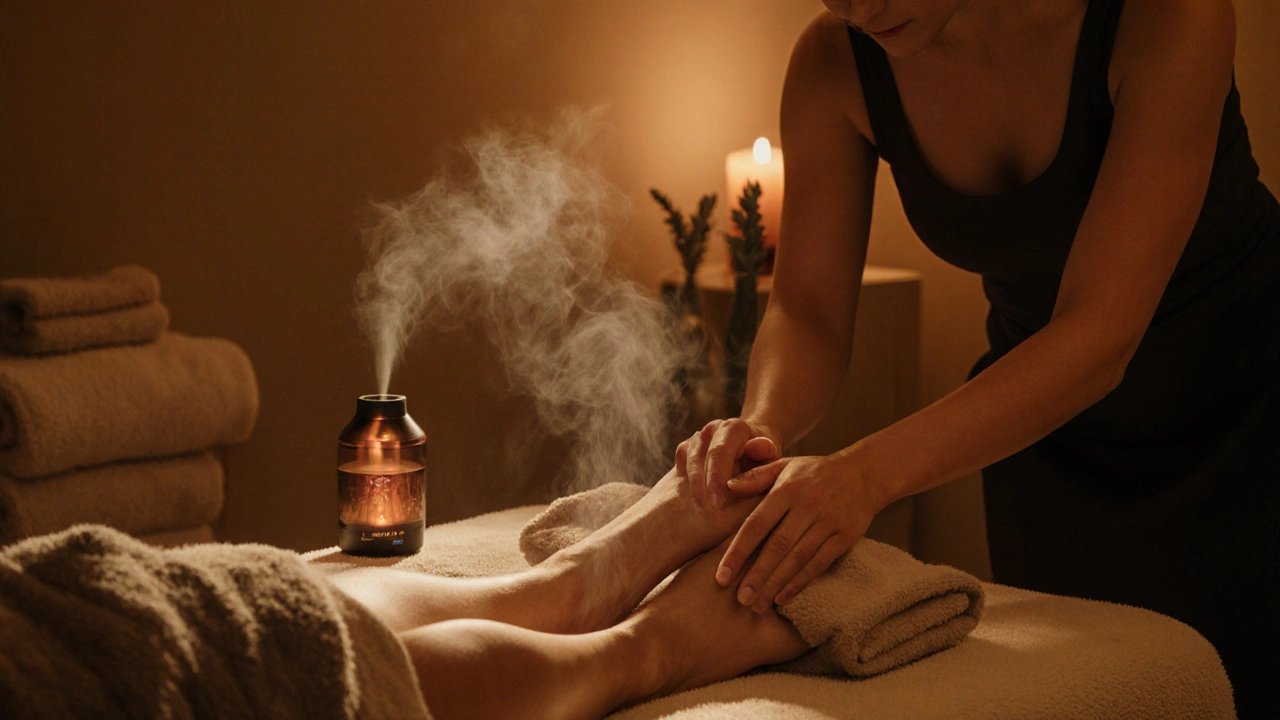
Quick Checklist for a Safe Session
- Clean feet and hands; use a light oil if desired.
- Start with gentle strokes; increase pressure only if comfortable.
- Avoid high pressure on bony areas like the heel’s outer edge.
- Stop if you feel sharp pain, tingling, or swelling.
- Hydrate afterward to help flush released toxins.
Following these steps ensures you reap the health gains without risking injury.
Putting It All Together
Whether you’re a busy professional, a student pulling long study nights, or an athlete training for a marathon, Foot massage offers a portable, low‑cost way to support your body’s natural healing mechanisms. Start modestly, listen to your body, and expand your routine as confidence grows. When in doubt, consult a qualified therapist who can tailor the session to your specific health goals.
Frequently Asked Questions
How often should I do foot massage?
For general wellness, two to three times a week is enough. If you have specific issues like chronic foot pain, daily gentle massage may be beneficial, but always monitor how your feet feel.
Can foot massage help with insomnia?
Yes. The calming effect on the nervous system can lower cortisol levels, making it easier to fall asleep. A 20‑minute session before bedtime often improves sleep quality.
Is it safe to massage my feet if I have diabetes?
Proceed with caution. Use light pressure, avoid areas with open sores, and check with your healthcare provider first. A certified therapist familiar with diabetic foot care is advisable.
What oils are best for foot massage?
Lavender and peppermint are popular for relaxation and a cooling sensation. For deeper muscle relief, try ginger or rosemary oil diluted in a carrier like sweet almond oil.
Can I combine foot massage with other therapies?
Absolutely. Many practitioners pair foot massage with reflexology, acupressure, or even hot stone therapy to amplify benefits. Just ensure each technique’s intensity matches your comfort level.

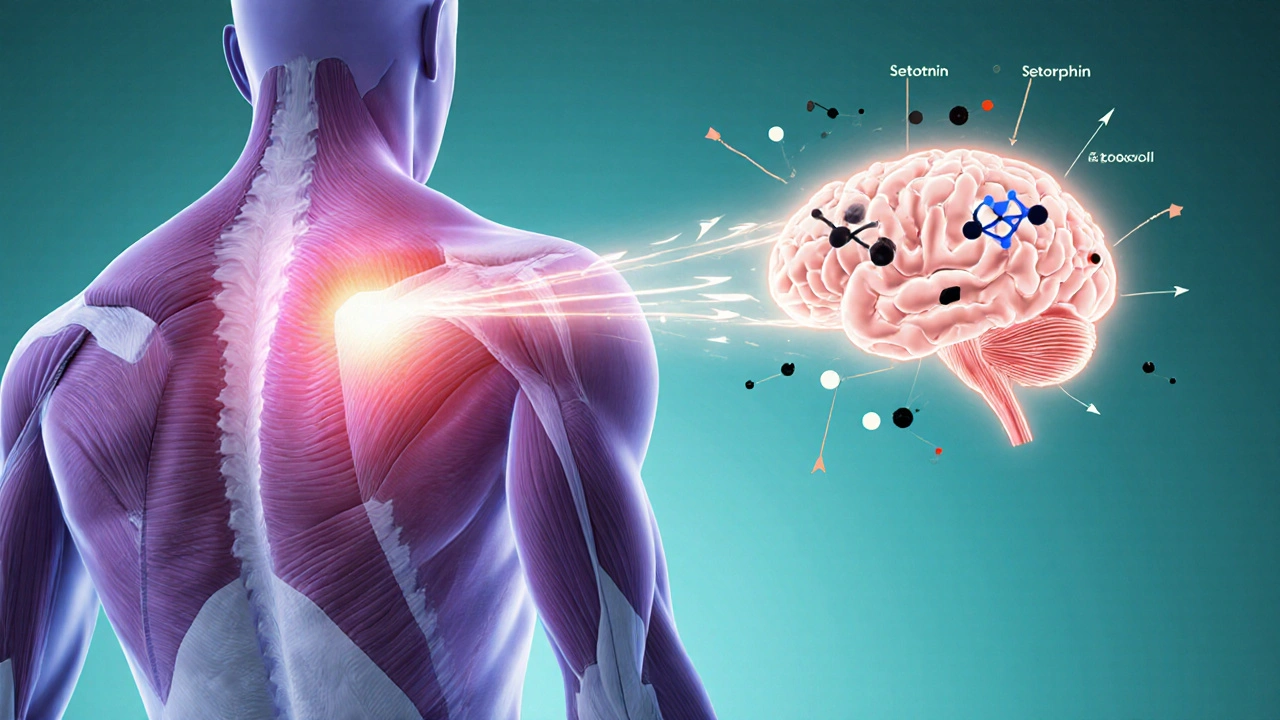
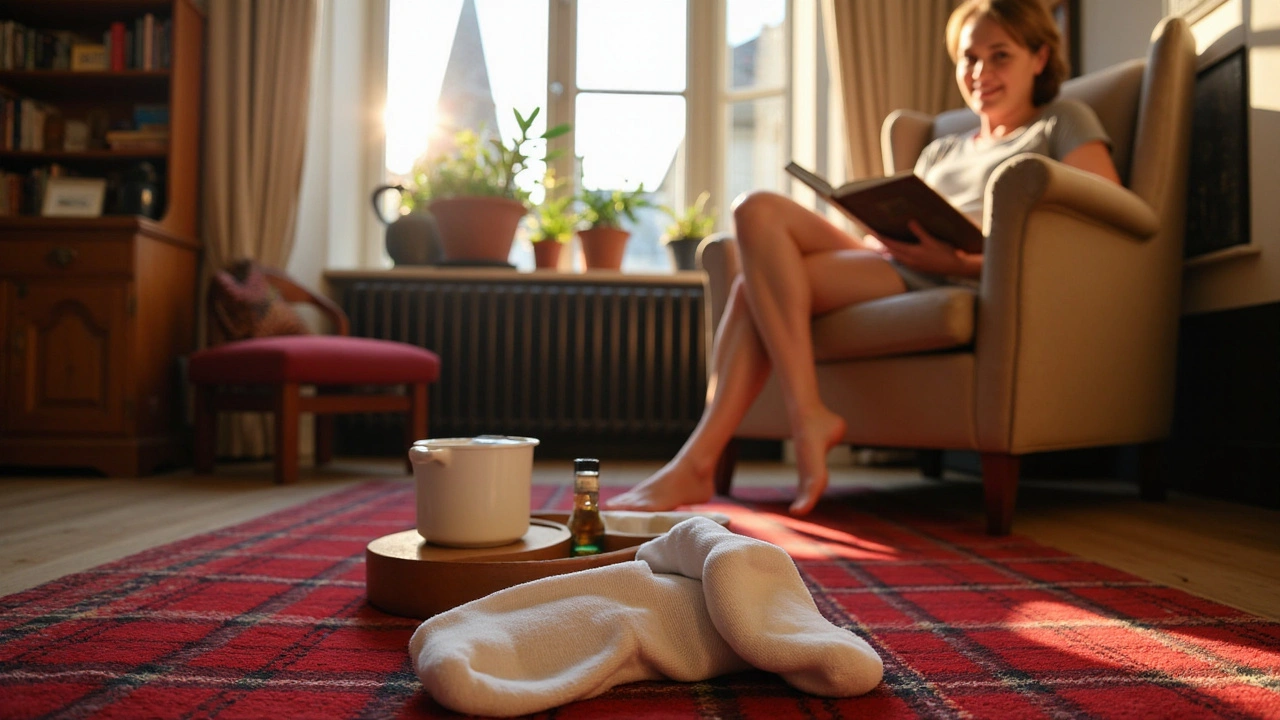

Geoffrey Leslie
October 17, 2025 AT 17:35The article correctly identifies foot massage as a means to stimulate peripheral reflex points, yet the phrase “the body rebalance itself” should read “the body rebalances itself.” Additionally, the claim that foot massage can directly influence distant organs is overstated; the mechanism is mediated through the nervous system, not a literal organ‑to‑organ connection. The listed techniques are accurate, though the recommendation of lavender oil would benefit from a disclaimer about potential allergic reactions. Overall, the content is well‑structured, but a few grammatical tweaks would enhance credibility.
Cheyenne M
October 23, 2025 AT 12:29Honestly this read feels like a marketing fluff sheet disguised as science. They toss around words like "holistic" and "detox" without any real data – classic pseudoscience agenda. Don't be fooled by the fancy tables; foot massage won't magically lower your blood pressure unless you also stop eating junk. Also, the whole "reflexology map" thing is a conspiracy to keep you buying expensive sessions from charlatans. If you want real health benefits, stick to proven therapies, not fancy foot rubs.
Jessica Buchanan-Carlin
October 24, 2025 AT 16:15Foot massage is just a lazy excuse for Americans to avoid real exercise.
Tolani M
October 30, 2025 AT 10:09Imagine a world where the humble foot becomes a gateway to holistic rejuvenation – that's the vision this piece paints, and it's a delightful one. From the ancient sands of Egypt to modern wellness studios, the practice has traversed continents, gathering stories and techniques like beads on a string. The author rightly emphasizes the three pillars – circulation, stress relief, and lymphatic drainage – each interwoven like the fibers of a well‑knit tapestry. When you gently rotate the ankle as a warm‑up rub, you’re not merely moving a joint; you’re awakening proprioceptive pathways that echo through the spinal cord. Pressing into the arch with the thumb evokes a micro‑massage of the plantar fascia, a structure that, when nurtured, can alleviate chronic heel pain that plagues runners and dancers alike. The toe stretch, often overlooked, offers a subtle elongation of the flexor tendons, encouraging better alignment of the metatarsal bones. A diligent heel knead, applied with mindful pressure, can stimulate the calcaneal tuberosity, a region rich in sensory receptors that, when activated, send calming signals to the brain. Concluding with a glide up the calf mirrors the flow of a gentle river, inviting the parasympathetic nervous system to take the helm. Regular practice, three to four times a week, builds a rhythmic ritual that many cultures have cherished as a form of moving meditation. Moreover, the checklist for safety is a prudent reminder that even the most benevolent practices demand respect for one’s limits – avoid high pressure on bony landmarks, stay hydrated, and discontinue at any sign of sharp pain. In a society obsessed with quick fixes, this article offers a grounded, accessible pathway to nurture the body from the ground up, quite literally. So, lace up those comfortable socks, set a calming playlist, and let the soles of your feet become the compass guiding you toward balance and vitality.
Michael J Dean
October 31, 2025 AT 13:55Great expansion on the techniques, Tolani! I love how you highlighted the proprioceptive benefits of the warm‑up rub – it’s something many beginners miss. Adding a note about hydration after the session is spot‑on; flushing out metabolites really does amplify the detox effect. Just a quick tip: for those sensitive to scents, a few drops of diluted eucalyptus can provide a refreshing counterpoint to lavender.
Ankush Jain
November 6, 2025 AT 08:49Look folks foot massage is not some wimpy spa trick it is a patriotic act of defending our health it shows our nation’s strength the blood flow boost is like a war marching through your veins and the stress reduction is a victory over the enemy called anxiety also the lymphatic drainage is a secret weapon we should all wield you can even combine it with patriotic music to amplify the effect the article missed this angle it's clear they want to keep us docile and buying overpriced oils remember the real power lies in our own hands and feet we just need to keep the pressure firm and the intention fierce
Robin Moore
November 7, 2025 AT 12:35Interesting take, Ankush. While enthusiasm is welcome, the physiological claims need balanced framing – excessive pressure can cause micro‑trauma rather than healing. Peer‑reviewed studies suggest moderate force yields optimal circulation without risking tissue strain. It's also worth noting that integrating foot massage with evidence‑based practices, like stretching, yields synergistic benefits. So, keep the vigor, but temper it with scientific caution.